Nvidia Drive PX 2 Car Supercomputer for Autonomous Driving
No, there will be no games
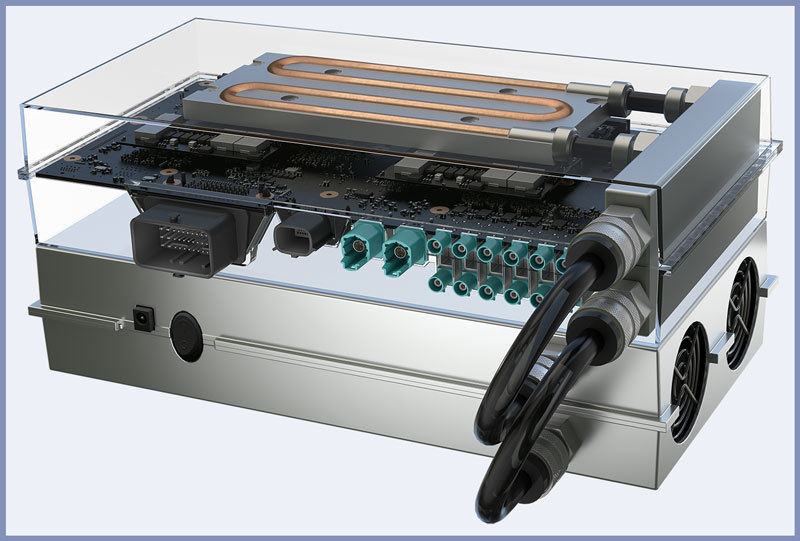 A year ago, at the CES 2015 International Consumer Electronics Show, manufacturer of video accelerators Nvidia showed its product for unmanned vehicles. It was a Drive PX computer. This year at CES 2016, Nvidia CEO Ren-Sun Huang talked about updating this product. The new computer is called Drive PX 2, has a heat output of 250 watts and a liquid cooling system.
A year ago, at the CES 2015 International Consumer Electronics Show, manufacturer of video accelerators Nvidia showed its product for unmanned vehicles. It was a Drive PX computer. This year at CES 2016, Nvidia CEO Ren-Sun Huang talked about updating this product. The new computer is called Drive PX 2, has a heat output of 250 watts and a liquid cooling system. Chips are installed on the board, the full announcement of which has not yet taken place: these are 2 next-generation Tegra processors. There are 4 Denver ARMv8 cores and 8 Cortex-A57 cores on the board. All 12 cores are 64-bit. There are also 2 Pascal video accelerators on the back side. These are the video chips of the architecture that will follow the current Maxwell used in the nine hundredth series of GeForce graphics cards.
Juan gestures with a computer board from the scene.
The process technology of microchips is 16 nm FinFet, and not the previous 28 nm. But even the new process technology does not save from high heat: Drive PX 2 dissipates 250 watts. Therefore, Nvidia had to use liquid cooling. The company believes that this is not a problem for automakers: the supercomputer is simply connected to a special cooling system. But the option with fans will still be.
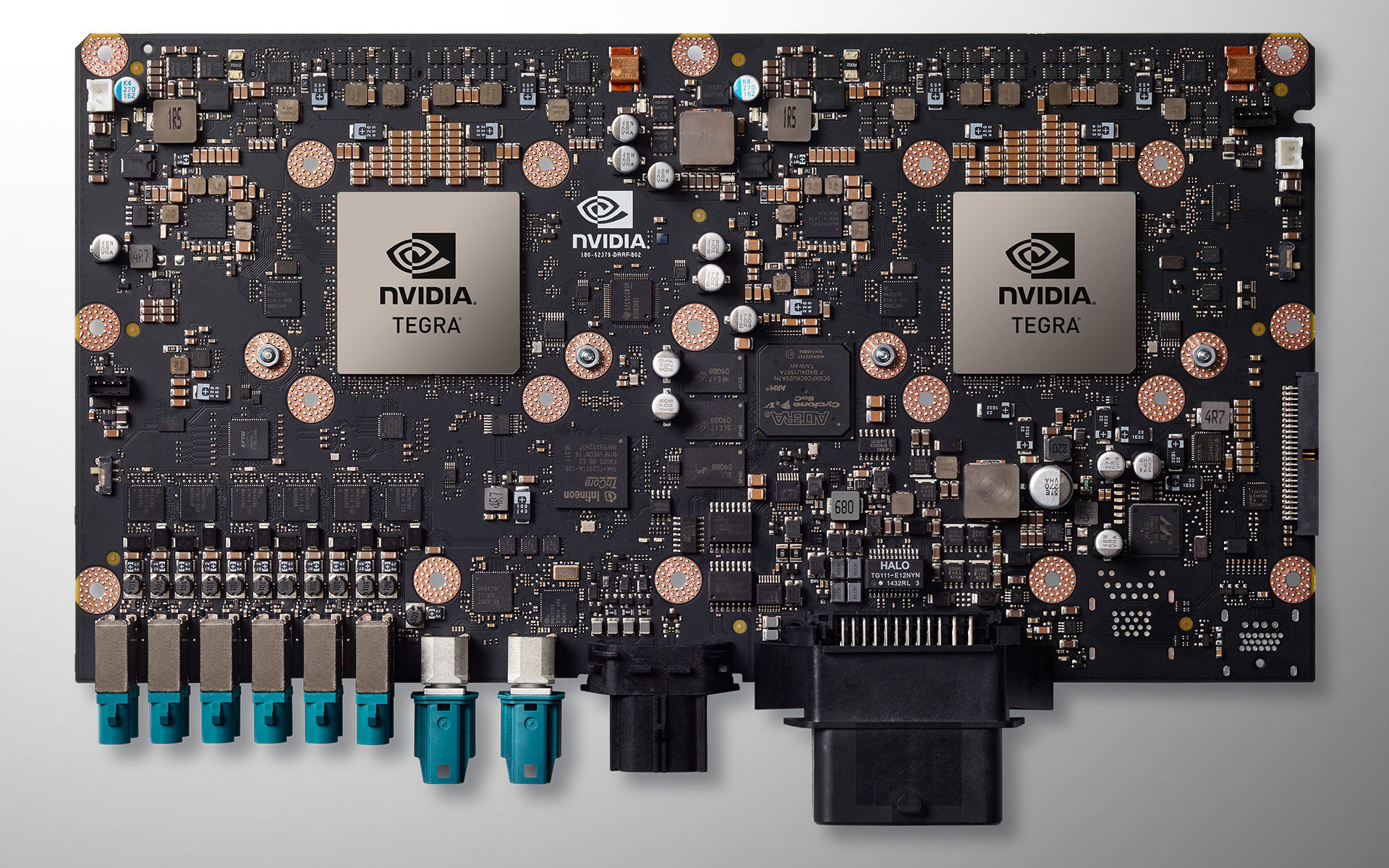
Two chips and two video accelerators provide tremendous performance: 8 trillion general operations, 24 trillion deep learning operations per second. (Nvidia does not explain what the operations are, but it is likely that these are 64- and 32-bit calculations.) The advantage of Drive PX 2 over last year's Drive PX is more than 4 and more than 10 times, respectively. Like Microsoft when it announced the Surface Book, Nvidia used the MacBook Pro as a benchmark for performance. Drive PX 2 is equivalent to 150 13-inch "firmware" with Intel Iris Graphics 6100 video accelerator. Drive PX 2 can recognize up to 2800 images per second. Comparison with the characteristics of a desktop graphics card Titan X, Nvidia .
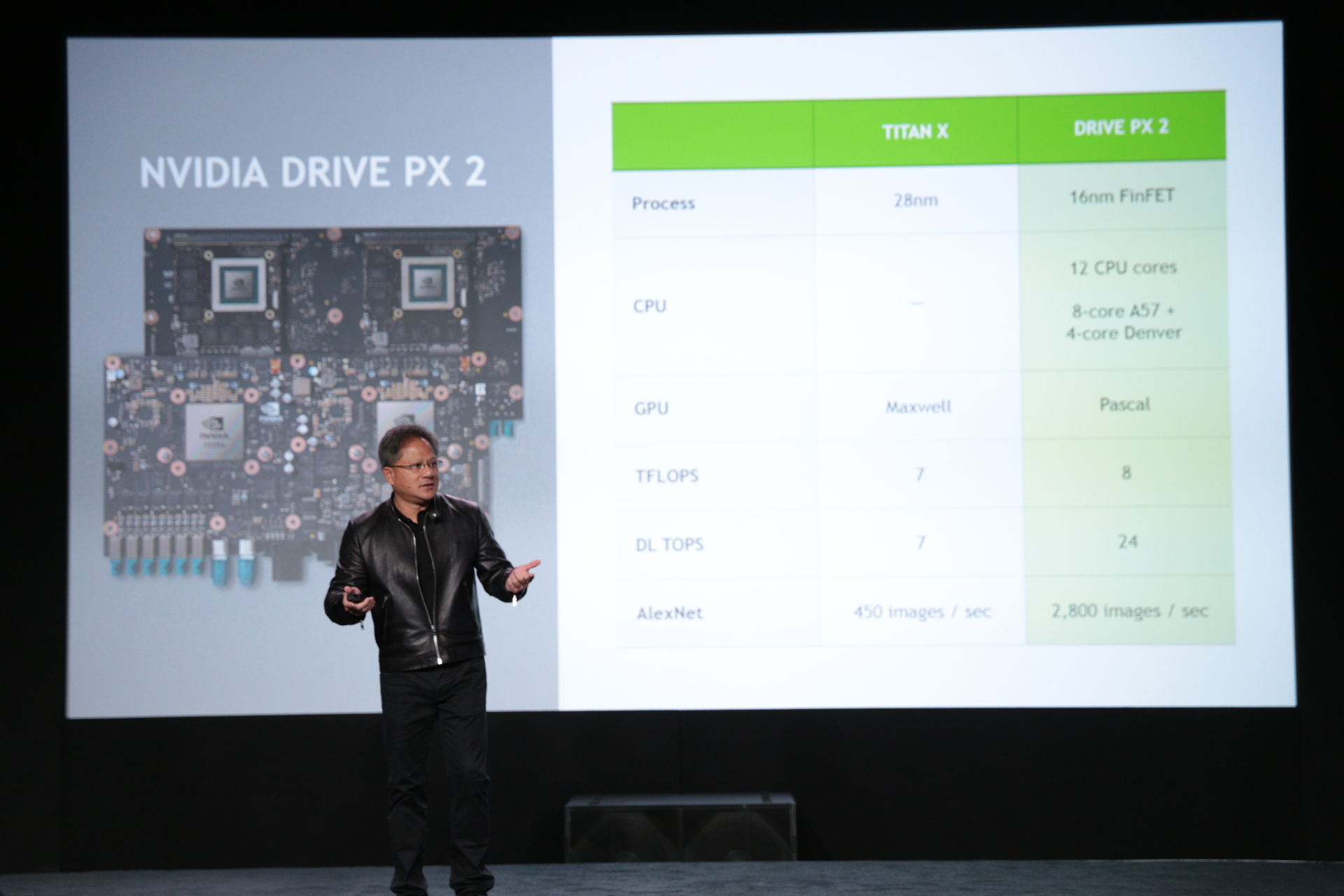
To process the data, you first need to get it. Drive PX 2 can capture video from 12 cameras, as well as lidars, radars and ultrasonic sensors. All this allows the computer to determine the location and make a full circular overview, which is important for calculating a safe trajectory.
But hardware is useless without appropriate software. Nvidia remembers this, and the company introduced Drivenet software. This is a neural network with 37 million neurons, which was trained on 120 million objects within a month. Over time, she will become better and better. Cloudiness will help. The car learns something new about the world and transfers it back to the "cloud", which forces everyone else to update. Each automaker will have its own “cloud”, Nvidia will help create the infrastructure.
Deep training is important in the changing conditions of the road, when new obstacles constantly appear, lanes overlap for repairs, and weather conditions interfere. Drivenet is able to distinguish between five classes of objects, including pedestrians and motorcyclists. So the neural network sees the surrounding space, Nvidia . DriveWorks is another Nvidia software product that is a collection of software tools, libraries, and modules. It is needed to calibrate sensors, collect data, synchronize, record and process streams using algorithms that run on Drive PX 2 processors. According to Nvidia, the previous Drive PX attracted
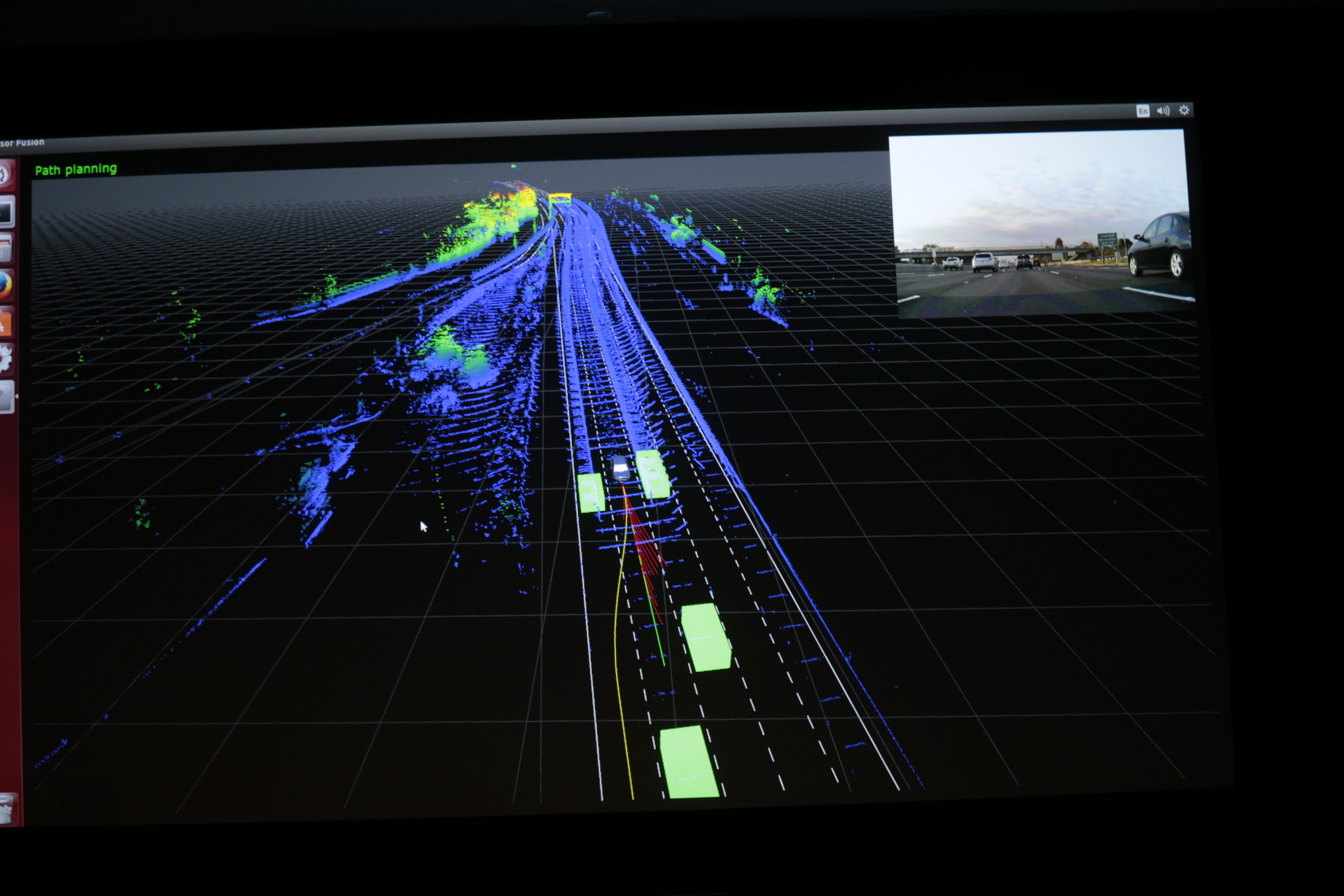
attention: 50 car manufacturers, developers and research organizations began working with the platform. To develop and test Drive PX 2, the company collaborated with Audi, Daimler, BMW and Ford. In the work of Robotaxi ZMP, the Drive PX 2 computer provides considerable assistance. An agreement has already been concluded with Volvo. The automaker will install a new mobile supercomputer in the hundred XC90 as part of the Drive Me program . As a result, these SUVs will be able to independently drive around the homeland of Volvo Gothenburg and semi-autonomously away from the city.
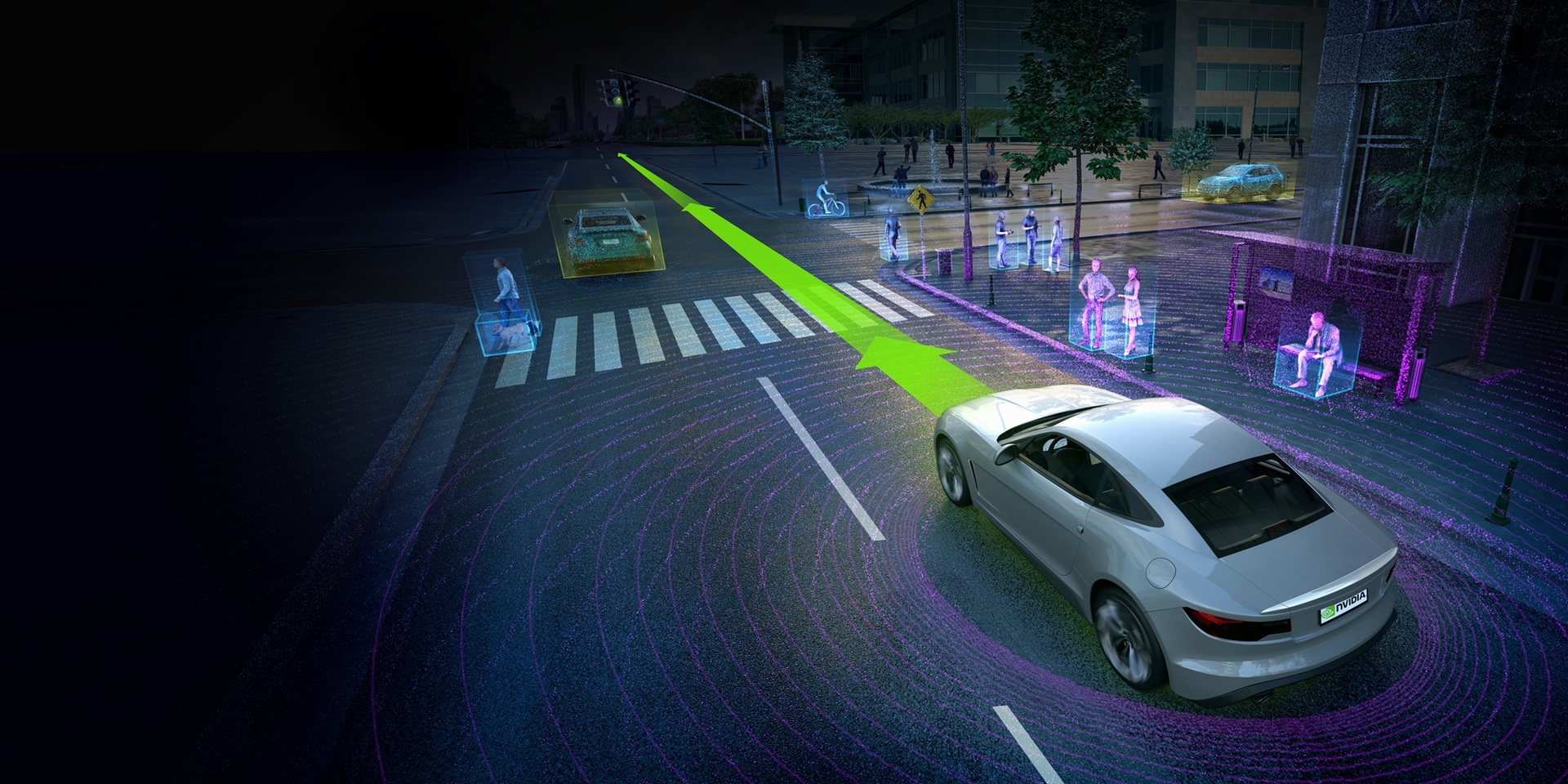
Demonstration of video capture from cameras and pattern recognition.
Nvidia Press Conference Archive
